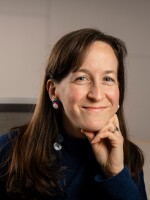If you spent time in the San Joaquin Valley over the holidays, the recent rain probably has you breathing a sigh of relief—not just because it’s bringing much needed rain and snow, but also because it’s the first time in weeks you can safely breathe. This story looks back at one of the most severe periods of smoggy air in decades.
When James Collins isn’t studying social work at Fresno State, he drives for the rideshare company Lyft. He sees a lot of open sky and bright sun.
Starting in late December, though, he says the sky looked different. “Sometimes the sun would pop through in the evenings,” he says. “Some days, though, it wouldn’t. It’d just stay hazy and foggy or smoggy.”
Beginning December 21, concentrations of particulate matter, or microscopic particles in the air, began to climb. Collins noticed his body responding. He started wheezing. Then, “throughout the day I would have a lot of small headaches,” he says. “That had me concerned, that kind of raised eyebrows for me.”
"There's a sense of relief when we see [a storm front] in the forecast." -Samir Sheikh
Many health outcomes were worse. Dr. Vipul Jain is a pulmonologist at Community Regional Medical Center in downtown Fresno, and he said for a few weeks, he observed an uptick in respiratory flare-ups in urgent care and the emergency room. “Patients will describe that as wheezing, chest tightness, cough,” he says, “and if it’s just allergic outside of the lungs, they might get itchy eyes, sore throat, those kind of symptoms.”
Many other health centers in the Valley confirmed the same trend, beyond the expected spikes in seasonal flu.
It’s undisputed: From late December until last week, the Valley’s air quality was atrocious. By some measures, it was the worst stretch of unhealthy air in almost 20 years. That pollution is directly correlated with respiratory issues and other short and long-term health problems. What is disputed, however, is what the sources of that pollution were, and what can be done about them.
To a large extent, the region’s poor air quality is a consequence of geography and weather. Mountain ranges block air flow on three sides, and wintertime weather patterns trap pollution low to the ground. Without rain, strong wind or a release of atmospheric pressure, the smog stagnates and hangs in place.
That’s why Deputy Air Pollution Control Officer Samir Sheikh of the Valley air district was so glad to see last week’s storm system. “There's a sense of relief when we see that in the forecast,” he says. “There's a sense of optimism that those conditions will help bring some much needed assistance in helping us clear out some of what's been trapped here in the Valley for these last couple of weeks.”
Indeed, last Wednesday’s rainfall ended nearly two weeks of stifling smog. In Bakersfield, it was the longest period of unhealthy particulate concentrations 1999—though many winters during the recent drought had more unhealthy days than this season has so far.

As for the source of those pollutants, Sheikh holds that emissions are lower than they’ve ever been and that it was southern California’s recent wildfires that drove particle pollution up to dangerously high levels. “We know that the fires have been a huge issue,” he says. “Those emissions don't go anywhere when you have this high pressure that traps it to the ground.”
State data do show drastic reductions in emissions over the last 15 years, for both particulate matter and its precursor pollutants like nitrous oxides. But UC Davis air quality researcher Chris Cappa says satellite imagery suggests smoke from the most recent fires blew mostly away from the Valley.
"If I have to work harder than the moms and dads and families, they're not going to bother and look at that information." -James Collins
The biggest culprits in this recent episode, he says, were the usual ones: Vehicle emissions, agricultural processes, and residential wood burning—despite the air district’s burn restrictions. “It’s very likely that the Check Before You Burn [program] has reduced emissions, but it hasn’t eliminated them.”
And for most of the smoggy timespan, burning wasn’t fully banned, but was allowed on registered devices, which burn more cleanly than conventional fireplaces.
Although the air district is asking the federal government to reduce vehicle emissions, Dolores Barajas-Weller of the Central Valley Air Quality Coalition would like to see tighter restrictions on residential wood burning. She says allowing it on clean air days serves only to drive pollution levels back up—even with registered devices, which still emit more than not burning at all. “The enforcement of that program also can be slightly weak,” she says, “in that we hear from a lot of community members saying that people burn in their neighborhood regardless of the check before you burn status.”
As for James Collins, he wishes air quality information were easier to find—for example, if it were integrated into the weather apps he checks on his smartphone. The native weather apps on iPhones and Android smartphones both display ozone data, but particulate matter—the Valley’s wintertime air pollution problem.
“If I have to work harder than the moms and dads and families and stuff, they’re not going to bother and look at that information,” Collins says. “I just wish it was more streamlined and accessible.”





